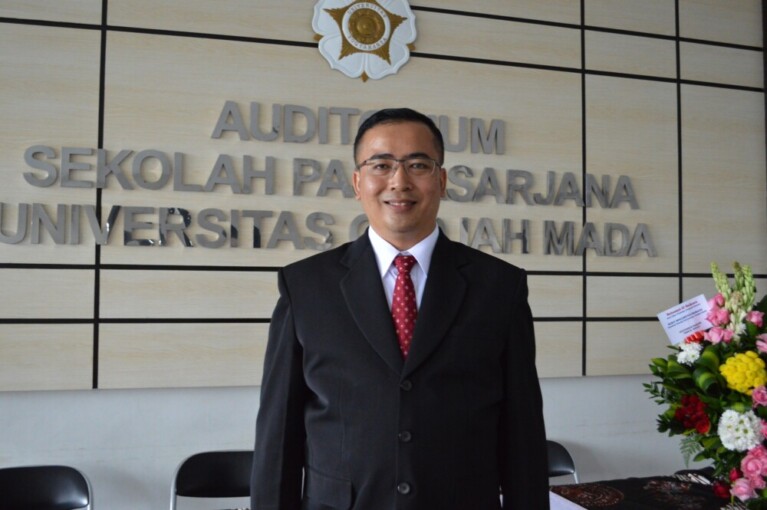
The intensity of traffic activities in Indonesia from time to time keeps increasing. This condition leads to a totally different condition when Indonesian Road Capacity Manual (Indonesian acronym: MKJI) was implemented in the 1990s.
Various analysis parameters which were produced by Indonesian Road Capacity Manual changed from time to time and from one location to another. It was proven by the differences between the results of traffic performance analysis using Indonesian Road Capacity Manual in 1997 with the real condition of traffic characteristics in the field.
“Indonesian Road Capacity Manual started in 1990 until 1994 with the total enlisted vehicles was 132 vehicles where the composition of the motorcycle was 39.57 percent and the length of national roads was 327,000 km,” said Ocky Soelistyo Pribadi during an open examination for the doctoral programme at Graduate School UGM on Friday (10/11).
Ocky said until the research done by Iskandar in 2011, the number of vehicles kept increasing up to 430 million with the composition of motorcycle reached 70% and the length of the national road was up to 737,700 km. It shows the increase in the number of motorcycles was 226 percent with the composition of the motorcycle was up to 77 percent and the total length of the national road was 34%.
“The increase gives sign the characteristic of Indonesian traffic changed from the condition in the 1990s to the next periods. It also shows the change of the equivalent value of light vehicles and the increase of the capacity value of urban roads,” said Ocky who is an officer at Directorate General of Land Transportation, Ministry of Transportation.
Defending his dissertation which entitled Updating the Indonesian Road Capacity Manual for Urban Road Segment using Traffic Micro-simulation, Ocky said during the arrangement of Indonesian Road Capacity Manual, the type of vehicle which dominated the traffic composition was light vehicles and the current condition is dominated by motorcycle. Meanwhile, the statement from the Indonesian Road Capacity Manual in the form of the smaller city showed the behavior of the less agile drivers and conventional vehicles that caused a lower capacity and speed at a certain flow.
“If we compare it with a bigger city, there is no correlation with the result of an average speed analysis for the research data, and it is known that the highest average speed happens in a smaller city. Hence, the value of the traffic normal composition in Indonesia Road Capacity Manual has changed,” he added.
Therefore, according to Ocky, it requires the traffic microsimulation parameters analysis using vissim software in order to adjust the data with the real condition of traffic in Indonesia. These traffic simulation parameters are the vissim model calibration that has been statistically tested according to the real condition of traffic in Indonesia.


